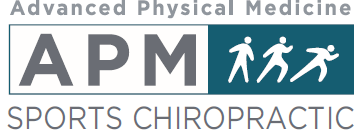Today’s healthcare system seems to be working more against the patient than for them. The patient should be the focus and everything possible should be done to get you back to your optimal level. The pitfall seems to be in 3 areas: Improper initial evaluation, leading to inappropriate conservative car, and lastly lack of a blueprint to avoid the pain or injury from coming back later in life. Just to be clear today we are discussing musculoskeletal pain and injuries.
Every patient needs 3 vital parts for their care
- Thorough evaluation and diagnosis
- Conservative treatment options
- Post-treatment plan of action
Thorough evaluation and diagnosis
We see the same scenario pop up very often where a patient sees their primary care physician or a specialist and there are complaints of the patient feeling like they were not listened to or that they feel like they were brushed aside with a very quick and minimal physical exam. The patient states that they feel like they were on a conveyer belt and rushed in and rushed out. They may get some imaging but end up being told a generic treatment plan of resting the injured area and prescribed some medication to help with the pain.
You should know what you need to get from a thorough exam and diagnosis. Based on your exam and diagnosis you should be presented with an idea of potential direct and indirect causes of your condition. You should walk out knowing your diagnosis and hopefully be able to communicate it to someone else if asked.
Your diagnosis should be determined by a thorough exam and should include at the very least:
- A thorough History
- Orthopedic Exams, Range of Motion, Neurological testing as needed.
- Muscle and Joint Palpation/Testing.
- Functional Assessment: Stability vs mobility based on faulty movement patterns.
When a thorough history and evaluation is performed the provider can then gather all available information and use it to help present a proper individualized treatment plan.
Conservative Treatment Options
Our office has found most patients and conditions that present to our office respond best to a combination of treatments as opposed to just one specific thing. Treatments include chiropractic adjustments, various types of muscle therapy, rehab exercises, and guidance on how to not only avoid future exacerbation but also improve your personal performance.
Treatment should not be a “cookie cutter” approach. With multiple therapies available, each which target different tissues it is important that your care plan is individualized based on the findings from your examination.
Post treatment plan of action
One of the big things we want to avoid is an exacerbation of the patient’s pain or injury. Our goal is to stay out of what we like to call the pain cycle. That’s where someone gets injured, they receive treatment and get better, but aren’t provided the proper guidance to avoid re-aggravation so they end up reinjuring the area. Some potential factors that can contribute to re-aggravation of your injury or symptoms include: repetitive strain from work, life or sport, not following the given exercises, or the lack of injury prevention training from your healthcare provider. Here are a sample of some prevention options you should expect to be guided on
- Activities of Daily Living Training
- Return to Work/Sport Advice
- Proper lifting, bending, posture, etc.
- Corrective Exercises
- Desk/Work Ergonomics Tips
- Proper Equipment recommendations
To wrap things up we want to let you know that all though you may not ever experience this problem, you should be aware of the level of treatment and options you should have to take care of your pain or injury. It’s a common saying but remember quality not quantity. Use the above guide to help familiarize yourself with what you need to get yourself the proper treatment and recovery from your injury.
If you or someone you know is suffering from acute or chronic musculoskeletal pain or injury please do not hesitate to contact us to get in for an evaluation. We hope you are staying safe and as always remember to strive to be better.
reference: The Chiropractic Success Academy

